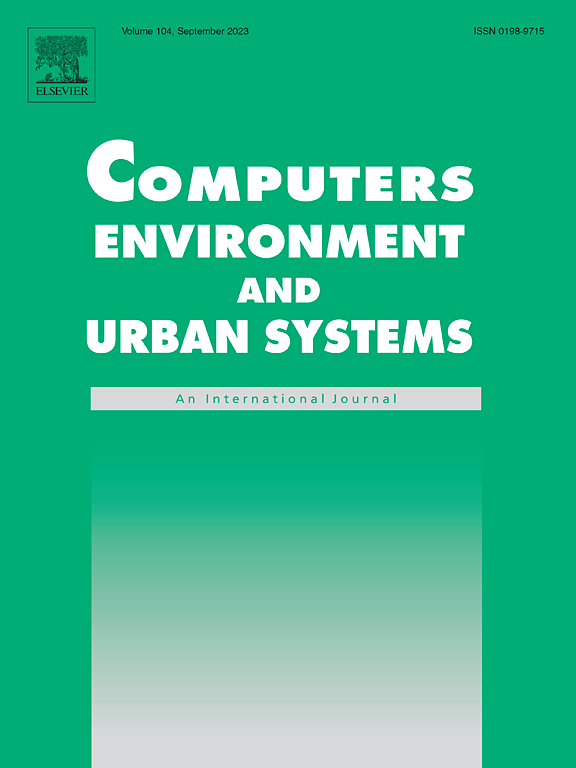Enhancing transparency in land use change modeling: Leveraging eXplainable AI techniques for urban growth prediction with spatially distributed insights
IF 8.3
1区 地球科学
Q1 ENVIRONMENTAL STUDIES
Computers Environment and Urban Systems
Pub Date : 2025-06-28
DOI:10.1016/j.compenvurbsys.2025.102322
引用次数: 0
Abstract
Recent applications of machine learning (ML) and deep learning (DL) techniques in land-use change modeling have demonstrated significant success in capturing the intricate dynamics of land development. However, their “black-box” nature restricts their utility in various contexts, such as uncovering the underlying drivers of urban expansion. To mitigate this issue, we propose to utilize eXplainable AI (XAI) techniques in ML/DL methods, which presents a promising solution to this primary constraint. To that end, we introduce DL methods to investigate and predict the non-linear dynamics of land use changes. These methods achieved notably high accuracy scores and were more computationally viable than traditional statistical approaches. Moreover, the proposed approach employed in this study surpassed the parameter interpretation capabilities of statistical methods. More specifically, the proposed XAI approach not only highlights the average effects of features on the outcome but also elucidates the factors influencing specific decisions regarding land use changes, including the number of vacant parcels, the share of single-family parcels, and certain time-lagged neighborhood features. Such analyses provide invaluable insights for researchers, practitioners, and policymakers.
提高土地利用变化建模的透明度:利用可解释的人工智能技术进行具有空间分布洞察力的城市增长预测
最近机器学习(ML)和深度学习(DL)技术在土地利用变化建模中的应用在捕捉土地发展的复杂动态方面取得了重大成功。然而,它们的“黑盒子”性质限制了它们在各种情况下的效用,例如揭示城市扩张的潜在驱动因素。为了缓解这个问题,我们建议在ML/DL方法中使用可解释的AI (XAI)技术,这为这个主要约束提供了一个有希望的解决方案。为此,我们引入DL方法来研究和预测土地利用变化的非线性动态。这些方法取得了显著的高准确性分数,并且比传统的统计方法更具计算可行性。此外,本研究所采用的方法超越了统计方法的参数解释能力。更具体地说,提出的XAI方法不仅强调了特征对结果的平均影响,而且阐明了影响土地利用变化的具体决策的因素,包括空置地块的数量、单户地块的份额和某些时间滞后的社区特征。这些分析为研究人员、从业者和政策制定者提供了宝贵的见解。
本文章由计算机程序翻译,如有差异,请以英文原文为准。
求助全文
约1分钟内获得全文
求助全文
来源期刊

Computers Environment and Urban Systems
Multiple-
CiteScore
13.30
自引率
7.40%
发文量
111
审稿时长
32 days
期刊介绍:
Computers, Environment and Urban Systemsis an interdisciplinary journal publishing cutting-edge and innovative computer-based research on environmental and urban systems, that privileges the geospatial perspective. The journal welcomes original high quality scholarship of a theoretical, applied or technological nature, and provides a stimulating presentation of perspectives, research developments, overviews of important new technologies and uses of major computational, information-based, and visualization innovations. Applied and theoretical contributions demonstrate the scope of computer-based analysis fostering a better understanding of environmental and urban systems, their spatial scope and their dynamics.
 求助内容:
求助内容: 应助结果提醒方式:
应助结果提醒方式:


